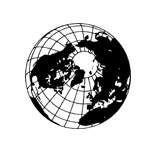Lähiluonnon tilallinen ja ajallinen saavutettavuus
Kaupunkilaisten kokemuksia luonnon saavutettavuudesta
Keywords:
urban green space, urban nature, accessibility, recreation, daily lifeAbstract
This article discusses the importance of access to urban green spaces in daily life. Urban green spaces are natural environments, where city dwellers can connect with nature, recreate and be physically active. Accessibility might be restricted by spatial factors (e.g. location, distance) and nonspatial factors (e.g. life situation, free time). In this study, city dwellers were found to visit urban forests located in their neighbourhood most often. 14 out of 19 interviewees found urban forests nearest to their home to be most significant. Personal situations and scarce free time seemed to restrict access to urban green spaces more often than spatial factors. Seasons, working days and days off may cause cyclic fluctuations for accessibility. Walking or cycling to work might be an option in improving access by having cycle routes in proximity to green spaces. Green neighbourhood thus increases accessibility to nature, improving the quality of life.


.png)






